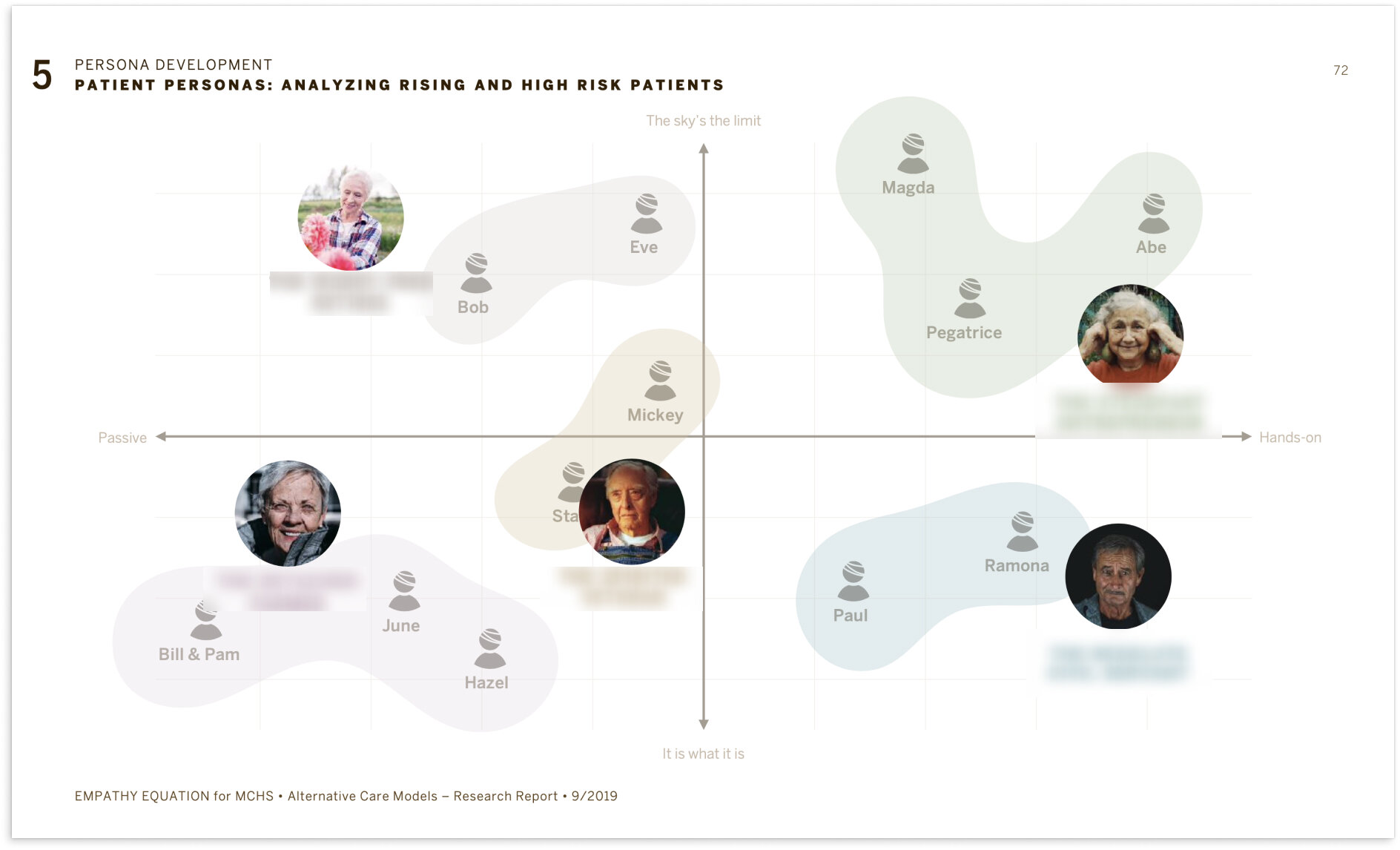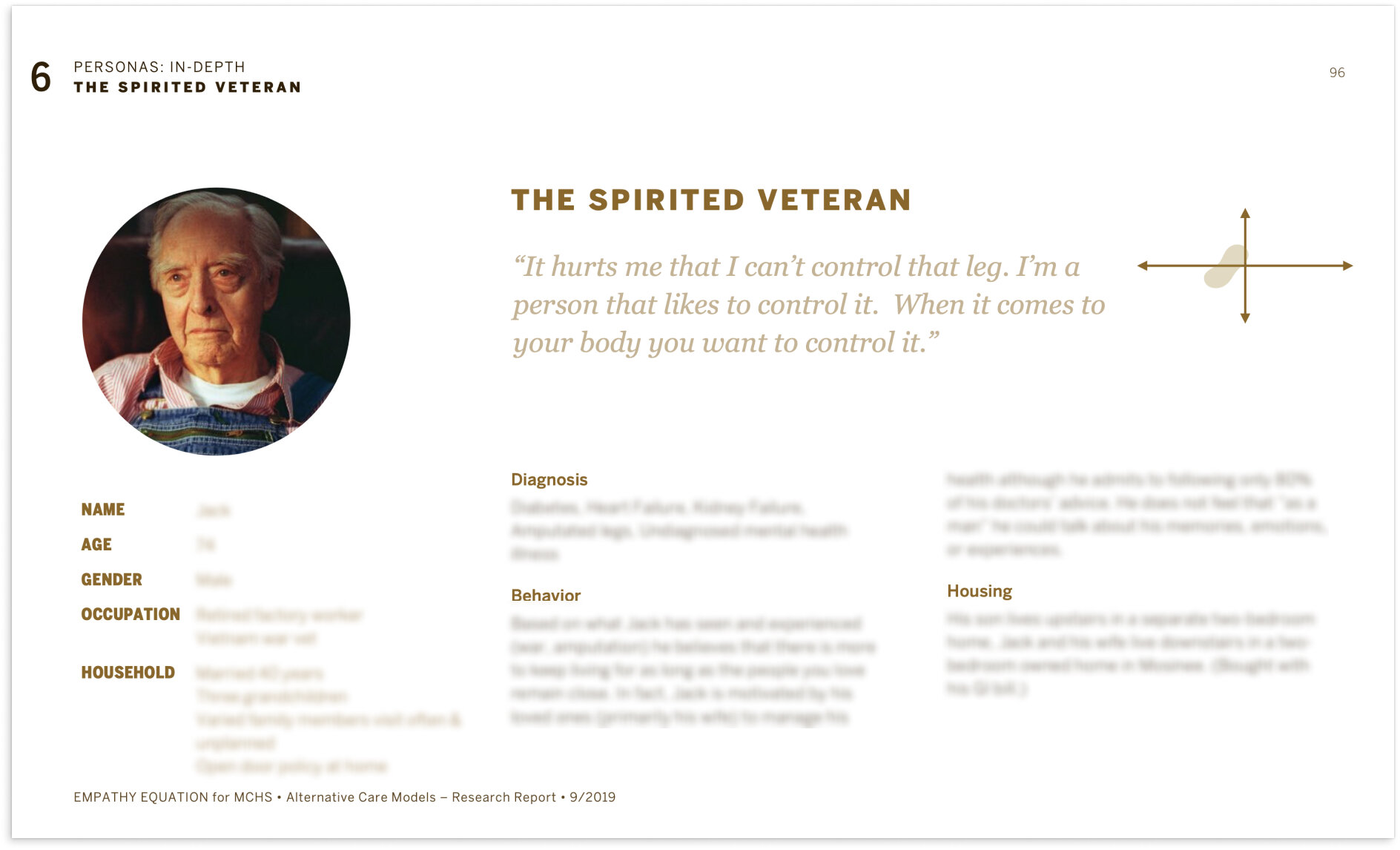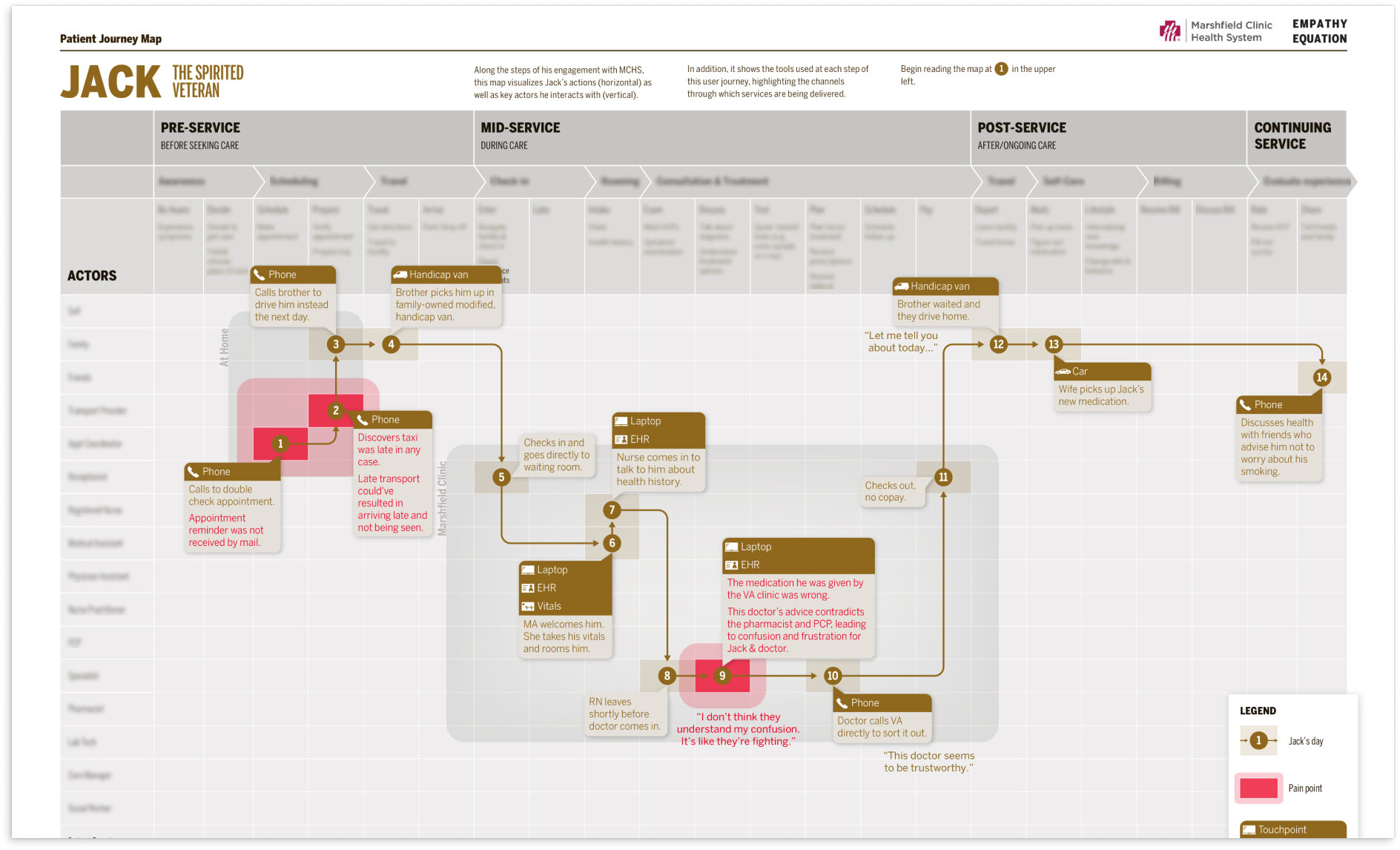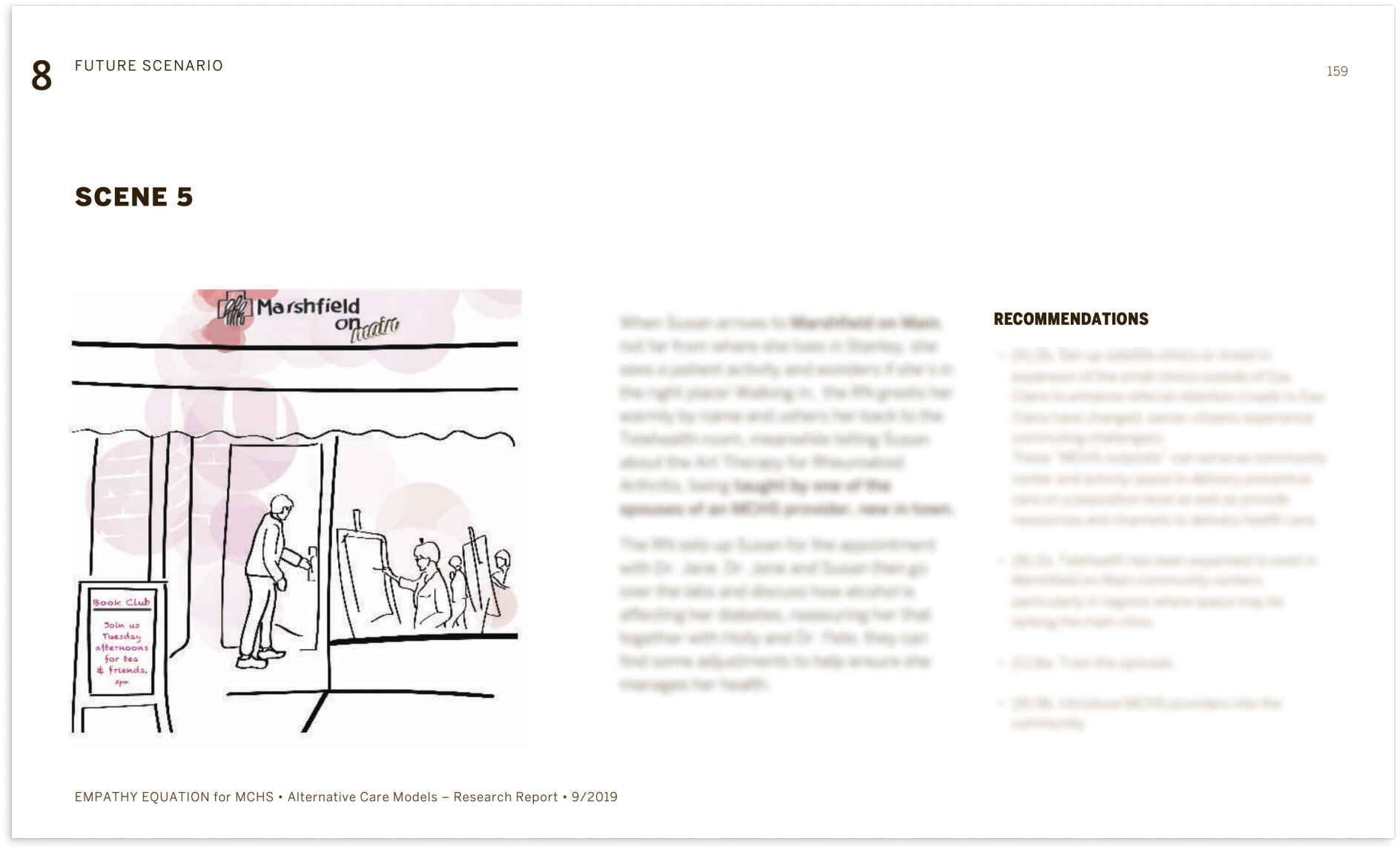Healthcare delivery to elderly demographics
MCHS • 2019 • Research, Strategym Concept
Summary
Extensive research and concepts for the future of healthcare delivery to elderly demographics in rural or remote areas.
As part of Empathy Equation I worked with a US hospital group to research future opportunities for healthcare delivery and define innovative care delivery models. As a team of 4 researchers we conducted interviews, collected insights, developed recommendations and designed a future service concept.
Research
Interviewing private matters
We started the project with initial desk research about US Healthcare with a specific focus on policy and technology. This allowed us to get a basic understanding and conduct more informed interviews with about 45 patients, providers and other internal stakeholders.
As a team of 4 researchers, we worked almost an entire month on this sometimes emotionally taxing topic. From juggling logistical, organisational and legal challenges (e.g. managing the strict privacy regulations of patient data) to being ambushed by 3 police cars, (mistakenly) looked up on Interpol or uncovering potentially fatal software issues, this project was full of learnings.
Field research, 2019
Analysis & Synthesis
Beyond symptom diagnosis
Already during research we used daily ‘stand-ups’ and ‘sit-downs’ to cope with the amount of findings, pre-synthesise and keep the core client team in the loop. These discussions of findings, pain points and potential insights helped to make sense out of the collected data and later-on also led to the creation of different mapping models.
In a 3 week synthesis phase, we synthesised the collected data in several models and mappings. Among the deliverables were detailed personas for providers as well as patients, user journeys, and an ecosystem map of the client’s organisation.
These models also allowed us to see how healthcare is delivered on different layers and find opportunities for improvements, map out recommendations in an interactive roadmap and illustrate a future scenario that the client could use for internal strategy communication.
Client Workshops
Ensuring client investment
To make sure our research and insights were to be fruitful, we included the client into every step of the process from the very beginning. Starting with a 2 day scoping workshop with staff from all kinds of departments and hierarchy levels, we made sure everyone was aware of the project happening and aligned on expected outcomes. This was an important step as we were to uncover several pain points in potentially sensitive areas and needed to be diplomatic in communicating them.
Throughout the project, we gathered the support from internal stakeholders, nurses, doctors, and managers and conducted several participatory workshops to include the client on synthesis, ideation and final concepts. Additionally, we prioritised an open door policy for our project room to increase transparency, let client staff see how we worked and thus get the client more invested in our thoughts and ideas.
Service Design Challenge
Improving the patient-provider relationship
Since we were looking specifically at elderly, at-risk patients we wanted to find solutions that didn’t rely too much on technology and instead focussed on ways to improve the relationship between patient and provider – one of the most important touchpoints of healthcare delivery.
Illustrated and told as a future scenario, we packaged our recommendations into a wholistic service that integrates different aspects of health, prevention, diagnostics, and other aspects of well-being to deliver healthcare while also improving the community.
Want to know more? Get in touch










